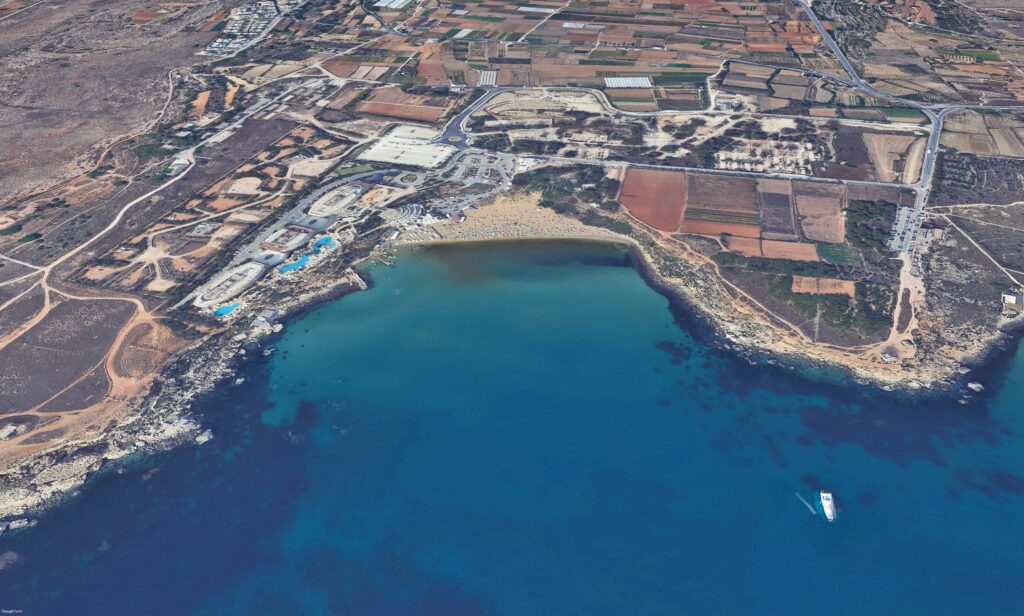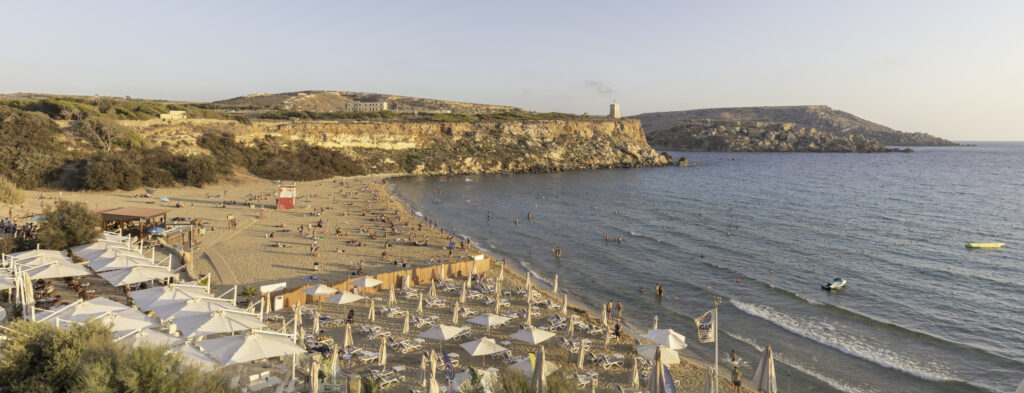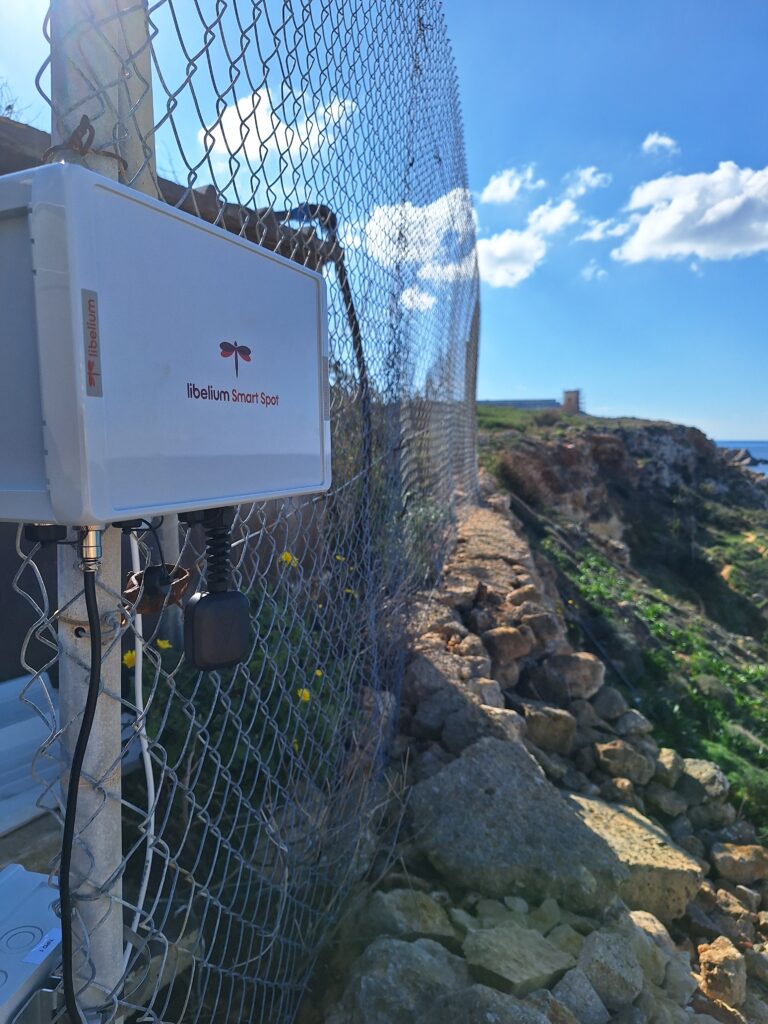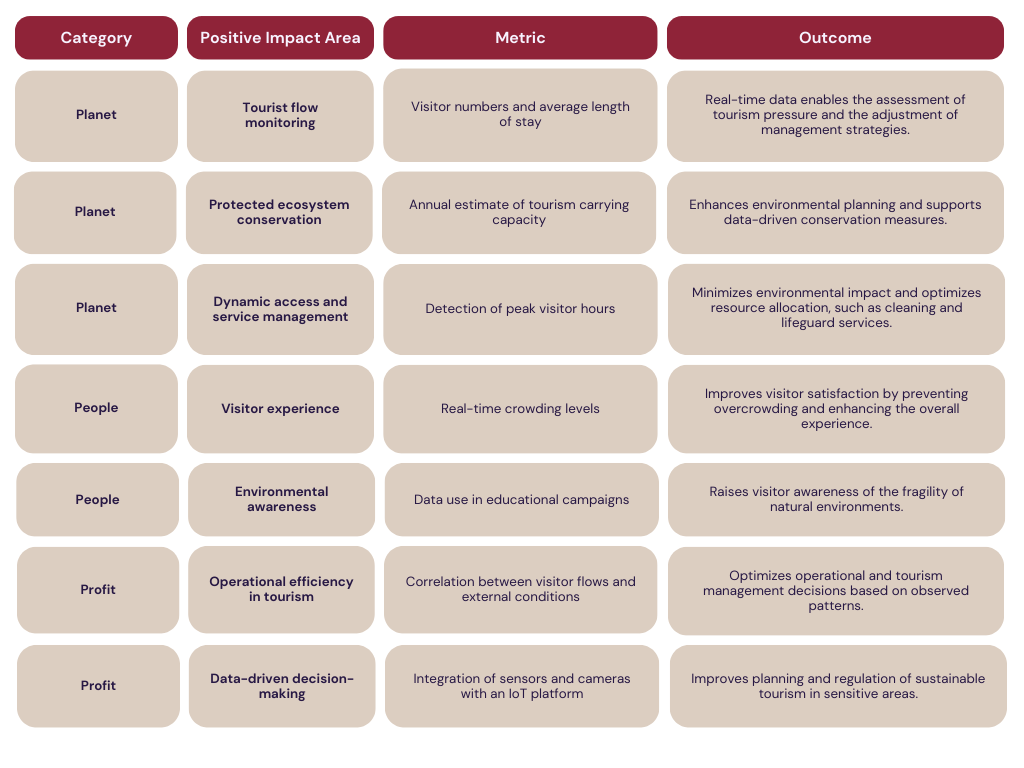How Libelium’s crowd monitoring is helping save a Maltese paradise
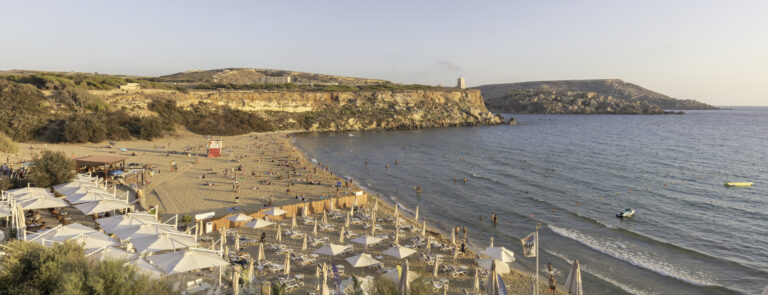
Picture a pristine golden-sand bay in Malta, kissed by crystal-clear turquoise waters. This is Ramla tal-Mixquqa, better known as Golden Bay, one of Malta’s crown jewels. Located on the island’s northwest coast, this slice of paradise is not only a top-tier tourist destination but also a protected area under Europe’s Natura 2000 network, safeguarding unique habitats and endangered species across the continent.
But beauty comes with challenges. With millions of visitors every year, Malta’s beaches face intense overtourism pressure, especially during peak season. Being recognized as a natural treasure also brings the responsibility to protect it from the growing threat of beach overcrowding. Let’s be honest, no one wants to wake up at dawn on holiday just to claim a spot for their umbrella, or feel like they’re sharing a towel with the group next door. Overcrowding, environmental erosion, congested access points, and biodiversity loss are all very real risks.
To protect this paradise, it was essential to move from assumptions to facts. The key lay in having real-time tourism data to enable smart decision-making and effectively manage tourist flows on the beach.
Sustainable tourism in Malta: a strategic priority for the islands
Tourism is a major economic pillar for Malta, accounting for over 25% of its GDP. However, the official Sustainable Tourism Strategy for the Maltese Islands 2021–2030 warns that the country’s greatest challenge is balancing tourism growth with environmental sustainability. The report highlights the urgent need to:
- Set tourist carrying capacity limits in sensitive areas such as beaches and nature parks.
- Implement smart beach technologies to measure and manage visitor flows.
- Develop tourism impact indicators in real time.
Within this context, the Golden Bay project stands out as a national pioneer — Malta’s first long-term crowd monitoring program on a protected beach.
Why smart Beach crowd monitoring matters for coastal tourism
Coastal destinations are among the most sought-after holiday spots. The last thing anyone wants is to start their day early just to “secure a place” in the sand or end up two feet away from someone else’s beach towel.
These destinations are often located in small areas and rely on highly seasonal tourism, which makes them vulnerable to overtourism.
As a coastal conservation destination, Malta faces:
- High tourist density in small spaces (up to 8,000 people/km²).
- Limited sustainability maturity, with a lack of structural measures.
- Economic dependence on tourism, which accounts for more than 25% of GDP.
Tourist flow monitoring is about much more than numbers. It’s a key tool to:
- Assess the tourism pressure on ecosystems.
- Design adaptive conservation strategies.
- Implement dynamic crowd management measures such as access limits, visitor flow distribution, or saturation alerts.
- Optimize public resources: cleaning, lifeguard services, transport, etc.
- Better understand visitor behaviour: when they arrive, how long they stay, and where they move.
All of this forms part of the broader concept of environmental digital twins: virtual replicas of physical environments that allow for smarter monitoring and more efficient management.
The solution: smart crowd monitoring for sustainable beach management
Making complex decisions like those needed at Ramla tal-Mixquqa is impossible without precise tourist flow data. But how do you count thousands of people on a beach efficiently and unobtrusively?
The answer came through a collaboration between the Maltese government (via MRDDf) and the managers of Majjistral Nature and History Park. They deployed Libelium’s Smart Spot technology, a solution designed specifically for this challenge, as part of the European TOURISMO project (INTERREG Euro-MED).
At the heart of the system is a network of discreet, rugged units housed in fireproof and vandal-proof casings, making them ideal for outdoor public spaces. These devices detect active Wi-Fi or Bluetooth crowd signals such as smartphones, tablets, and wearables, while fully complying with GDPR.
With two types of antennas available depending on the use case, the solution delivers real-time data on crowd movement.
All this information is integrated into a dedicated dashboard for tourism managers, enabling them to regulate access, optimize cleaning schedules, or launch awareness campaigns.
Early results: How real-time tourism data is driving change
Although still in its early stages, the project is already revealing clear occupancy patterns, correlating visitor peaks with public holidays or weather conditions.
The Smart Spot system can be integrated with environmental sensors (temperature, humidity, wind) to predict high attendance days based on forecasts.
This data-driven tourism management approach will help to:
- Rebalance tourist demand: promoting visits during the low season (autumn/winter) and highlighting alternative points of interest to ease pressure on the most popular spots.
- Foster regenerative, sustainable tourism.
- Apply dynamic capacity limits: setting daily visitor caps or variable tourism fees based on demand, allowing proactive crowd control at the beach.
The technology has already been deployed at events such as the Starlite Occident Festival in Marbella and tourist areas in northern Spain, demonstrating its versatility, from managing seasonal beaches to handling high-intensity events and analyzing regional tourism trends.
The future: using Digital Twins to safeguard coastal ecosystems
Beach crowd monitoring is more than just counting people; it’s about understanding the real tourism pressure on the coastal ecosystem. The approach is part of a groundbreaking concept: environmental digital twins for sustainable tourism management.
Imagine creating an exact virtual replica of the beach on a computer. This digital “avatar” is fed with real-time data from smart crowd sensors, allowing managers to simulate scenarios, predict the impact of crowds, and test different beach management and conservation strategies without affecting the real environment.
Ultimately, technology becomes a powerful ally for a more conscious, responsible, and sustainable tourism experience, leading to a more enjoyable experience for everyone.
